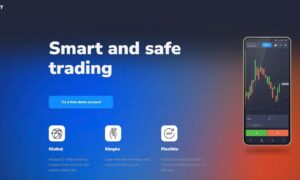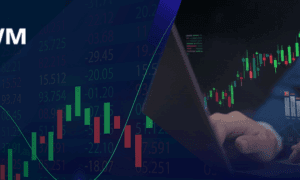Trading is no longer about intuition — it’s about data.
And yet, one of the most reliable momentum tools ever built — the QQE Indicator (Quantitative Qualitative Estimation) — is often misunderstood even by experienced traders.
The problem isn’t with the tool. It’s with the interpretation. QQE was designed to measure volatility and momentum together, not in isolation. But in most setups, traders use it like an RSI crossover or a generic buy/sell signal, stripping away the very depth that makes QQE powerful.
Many traders still struggle with QQE interpretation, often repeating setup and signal errors outlined in QQE Indicator Mistakes Beginners Should Avoid in 2025 — a detailed breakdown of the most common pitfalls seen in real trading environments.
⚙️ Why the QQE Indicator Isn’t Just Another RSI
The QQE Indicator in 2025 represents a new generation of adaptive momentum analysis — designed to measure market volatility and trend reliability across multiple asset classes.
At its core, the QQE indicator refines the RSI by introducing volatility smoothing through an ATR-based filter.This double-layer logic measures how strong a move is — not just where it happens. In fast-moving markets like crypto or forex, that distinction can be everything.
Most traders see a crossover and assume momentum confirmation. But the QQE’s Fast Line and Signal Line often diverge briefly before a genuine trend — an intentional feature, not a flaw. Ignoring this lag is one of the most common mistakes.
Pro Insight:
When the QQE fast line crosses upward with widening distance from its signal line, it reflects sustainable momentum. If it crosses with minimal spread, it’s probably noise.
🧩 Misuse #1: Treating QQE Like a Binary Switch
QQE isn’t designed for “on/off” decisions.It’s an adaptive indicator, and its strength lies in how it filters volatility.Yet many traders set static ATR values or skip calibration altogether.
Why it matters:
Without proper calibration, QQE loses its dynamic edge. The system’s adaptive smoothing stops reflecting true market pressure — especially during volatility spikes.
Using a fixed setup across all pairs or assets is like wearing the same lens prescription for every distance — technically possible, but rarely accurate.
📉 Misuse #2: Ignoring the Volatility Context
The Quantitative Qualitative Estimation system was built for multi-market use — from equities to crypto — where volatility behavior shifts constantly.
When traders ignore that, they read momentum strength out of context.
For example, during high volatility, QQE’s smoothing period should be shorter to capture quick bursts. In stable markets, longer smoothing helps reduce noise.
Platforms like TWM handle this dynamically — allowing traders to adjust parameters while viewing live ATR impact on their charts.This is where tools meet precision — when systems adapt to markets, not the other way around.
🧠 Misuse #3: Over-Optimizing for Past Performance
Overfitting — the silent killer of algorithmic trading. Many traders modify QQE parameters after every losing streak, creating setups that perform well in history but fail in reality.
Smart Fix:
Backtest with stable settings and enough data variance.TWM’s desktop environment, for instance, allows traders to simulate strategies offline, where no cloud latency or network noise affects results.This isn’t about “perfect parameters.” It’s about consistent conditions.
🔍 How Professionals Read QQE Differently
Professional traders treat QQE as a diagnostic tool — not a trigger.
They study its momentum slope, signal separation, and volatility expansion rather than looking for colored crossovers.
They often combine QQE with structural layers like Range Levels or Volatility Switch, creating multi-dimensional systems that validate entries before execution.
This layered approach reduces emotional bias and false confirmation.
For an example of how such integrations work inside modern software, explore Quant Layers: Building a Multi-Extension Trading Framework Inside TWM — a look at multi-indicator confluence in quantitative trading design.
🧭 Building Context, Not Complexity
Trading precision comes from clarity, not clutter.
The QQE Indicator is one of those rare systems that rewards understanding over adjustment. When interpreted correctly, it translates chaos into coherence — a rare trait in technical analysis.
A good setup doesn’t predict price; it translates pressure. That’s what QQE was built for — and why traders who slow down to interpret it correctly often outperform those chasing instant confirmation.
If you’d like to explore how structured trading systems manage volatility and signal calibration, check out advanced QQE Indicator strategies — a deeper look at modern use cases and adaptive configurations.
❓ Quick FAQs for 2025 Traders
Q1. Why is QQE often misunderstood by new traders?
Because they use it like a crossover indicator, ignoring volatility logic. QQE measures trend quality, not just direction.
Q2. Can QQE be automated for algorithmic setups?
Yes. It integrates seamlessly with algorithmic trading systems for volatility-driven signal automation.
Q3. Is QQE still relevant in AI-powered trading?
Absolutely. QQE’s smoothing technique complements AI quantitative trading models by reducing false data variance.
Q4. Should I use QQE for crypto or forex?
Both. Its adaptive ATR logic works across multiple asset classes.
Q5. Does platform type affect QQE performance?
Yes. Desktop trading software like TWM avoids cloud latency, offering faster local processing for real-time response.
Media Contact
Company: Asko SA
Contact Person: Martina Castro
Website: https://twm.one/
Telephone: +41 76 476 5208



































